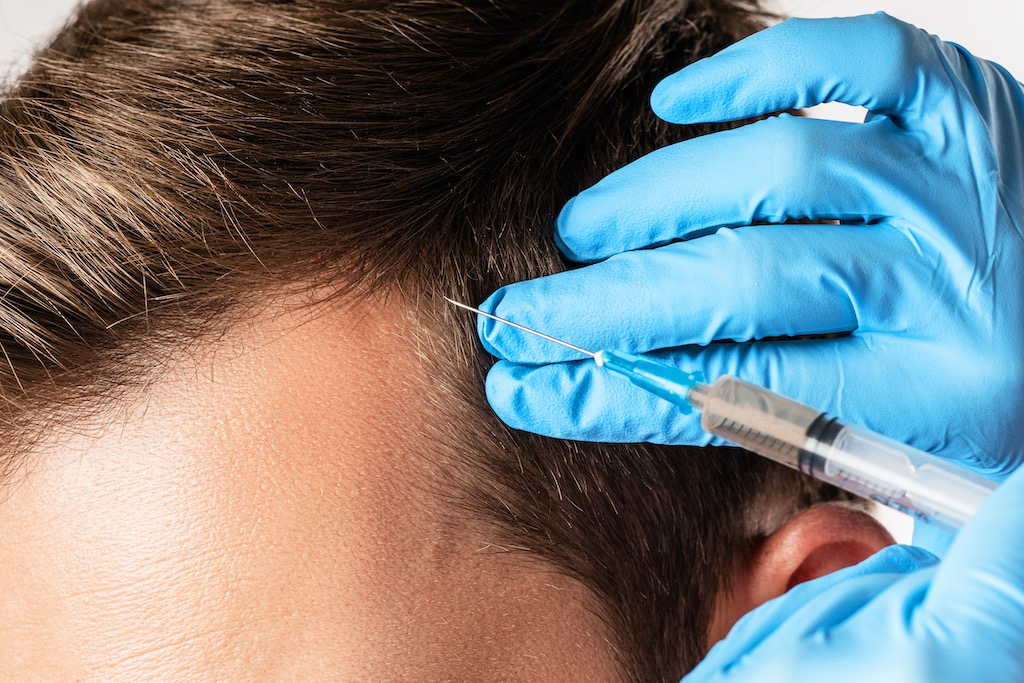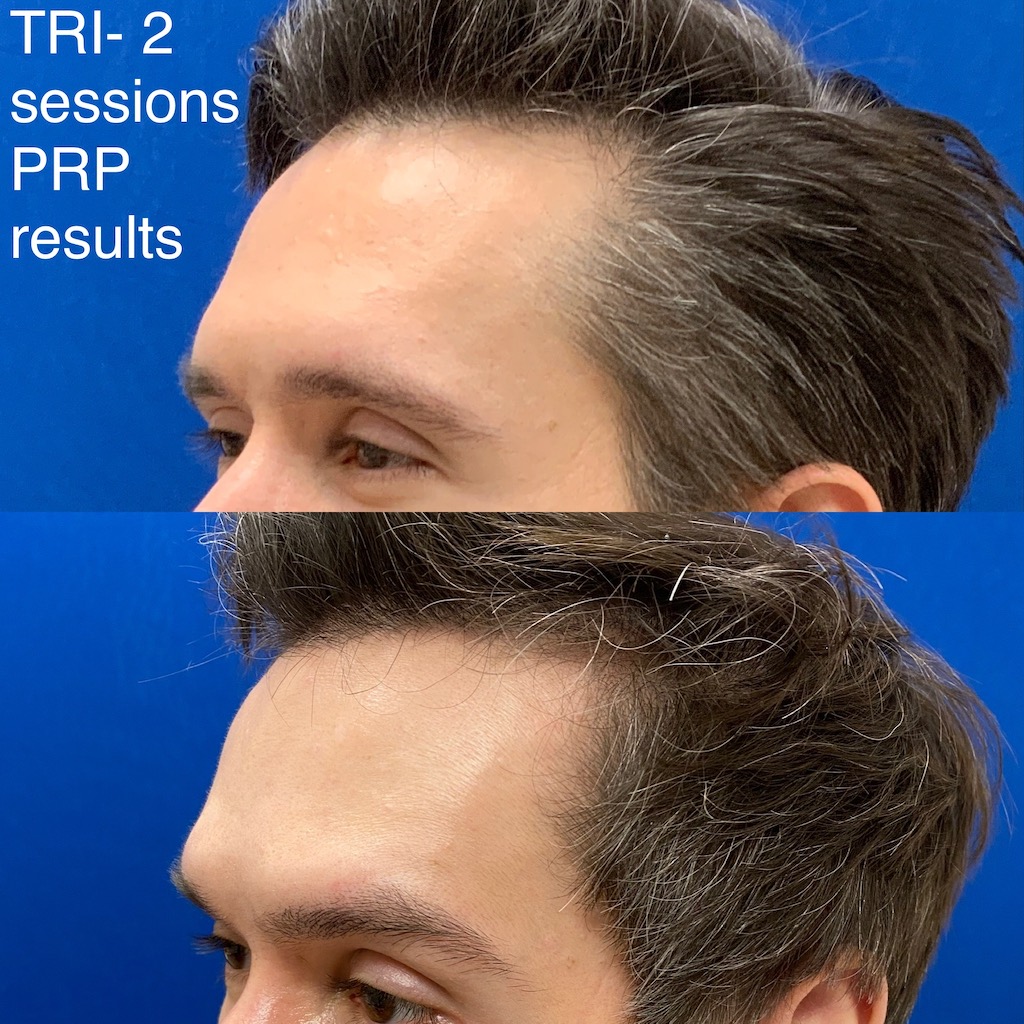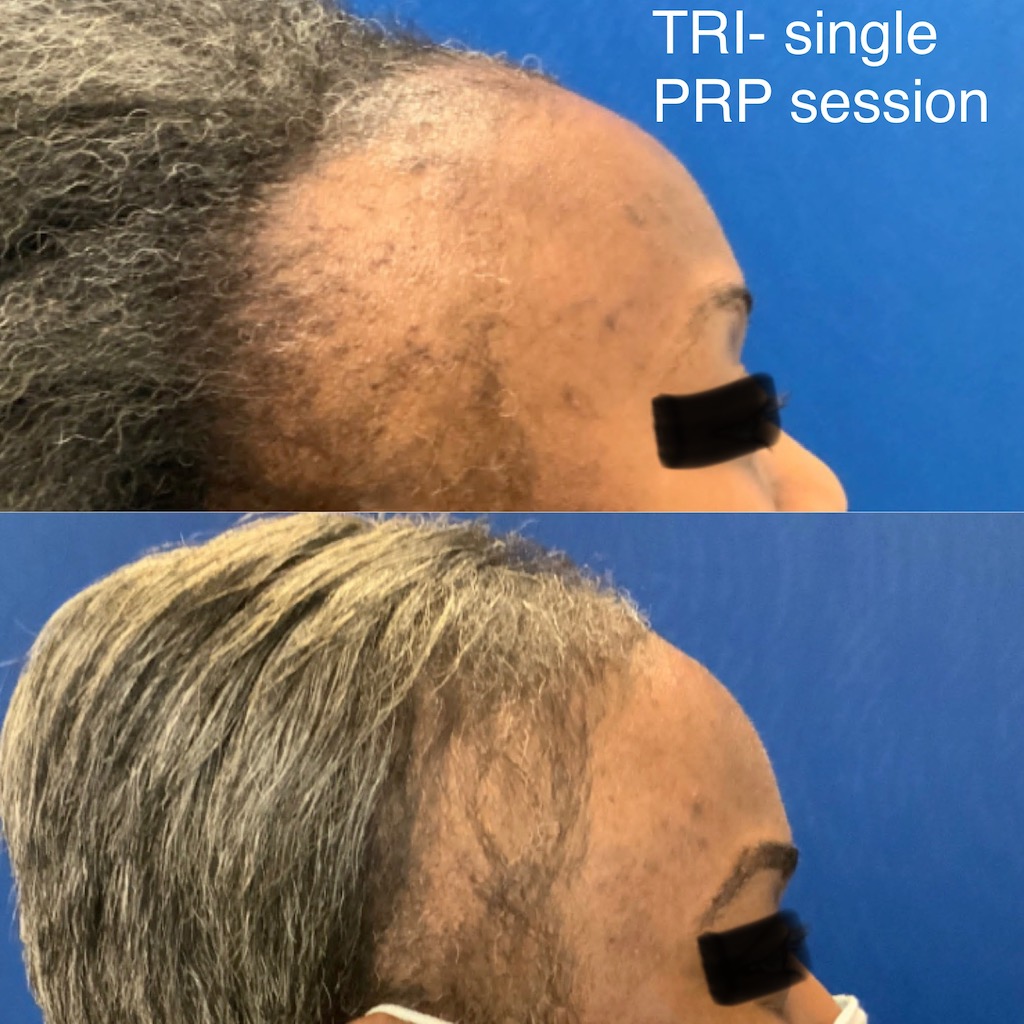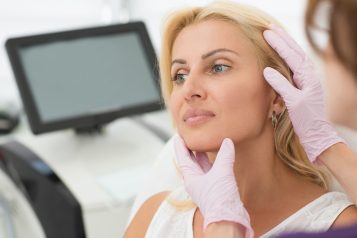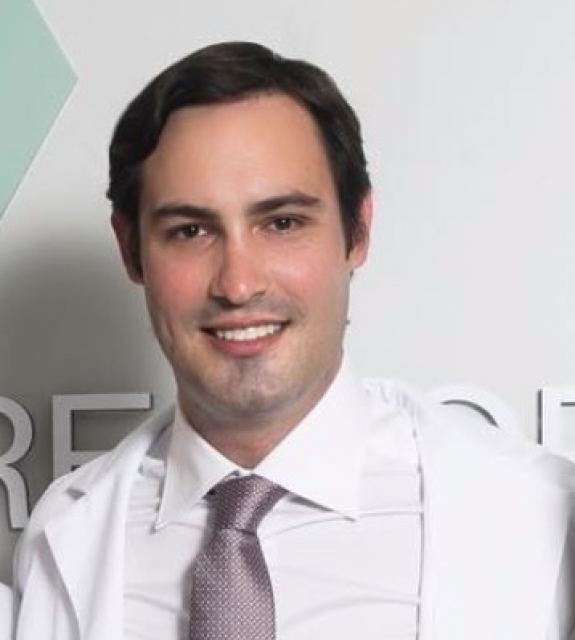Shamila Gupta Rawal, MD, a board-certified otolaryngologist/head and neck surgeon, specializes in the management of hair loss and rejuvenation of the face and neck at The Rawal Institute for Hair Restoration and Aesthetic Medicine. Dr. Rawal the only hair restoration surgeon providing comprehensive surgical and non-surgical treatment for all types of hair loss in Madison, Wisconsin, with an expansive patient base that travels in from coast-to-coast. Haute Beauty sits down with Dr. Shamila Rawal to discuss how PRP, or platelet-rich plasma, is used to stimulate growth in hair follicles.
 Photo Credit: ShutterstockHB: What is PRP?
Photo Credit: ShutterstockHB: What is PRP?
PRP, or platelet-rich plasma, is a regenerative medicine technology. Throughout one’s life, the body stays healthy by continuously regenerating new cells to replace old tissues, heal disease, and restore injuries. Regenerative medicine taps into this natural ability, extracting the cells responsible for regeneration, concentrating them, and then injecting them back into the body, where they stimulate new cellular growth and healing. Because the cells are taken from one’s own body, issues like infection and rejection are almost non-existent, making the technology very safe and very effective where indicated.
HB: How is PRP performed?
A small volume of blood (20-60cc) is drawn from the patient and then spun in a closed, sterile system in a special machine called a centrifuge. This allows for the separation of the blood into several components. The Platelet Rich Plasma layer contains a high concentration of platelets, which are the blood cells rich in growth factors and responsible for clotting and wound healing. Activation of the platelets with calcium, or mechanically with microneedling, releases these growth factors, which will trigger the healing cascade and attract the body’s own stem cells to the site of injection. Because injection causes a local injury to the tissue, a desired inflammatory response is begun, and the platelet-derived growth factors and mesenchymal stem cells begin their work to repair the injury. As a result, new collagen and elastin are produced, and hair follicles are stimulated as well.
 Photo Credit: Courtesy of Dr. RawalHB: How does PRP stimulate hair growth?
Photo Credit: Courtesy of Dr. RawalHB: How does PRP stimulate hair growth?
PRP works to stimulate growth in hair follicles that have become miniaturized under the influence of hormones or because of genetics. There is a direct impact of healing of damaged hair follicles, and there is also an indirect benefit secondary to repair and healing of follicular support structures, such as collagen and blood vessels. PRP cannot generate new follicles in areas that have shiny baldness; however, when used in conjunction with hair transplant in these areas, can work synergistically to promote optimal and faster growth of the transplanted follicles. Because hairs are converted from their resting phase to a new growth phase, a lag time of 3-4 months is expected before significant changes can be appreciated. This timeframe will be influenced by other treatments one may be receiving for hair loss at the same time.
HB: How long is the procedure and how many sessions are needed?
The full PRP with microneedling procedure takes approximately 45 minutes to an hour, and local anesthetic may be applied depending on the site of injection and the patient’s preference. Usually, a series of 3-4 treatments separated monthly are advised, however, more may be necessary for some individuals. Maintenance treatments may be done once or twice yearly, based on the patient’s response.
 Photo Credit: Courtesy of Dr. RawalHB: Who is a good candidate for PRP and who should not have the procedure?
Photo Credit: Courtesy of Dr. RawalHB: Who is a good candidate for PRP and who should not have the procedure?
PRP is typically indicated for male and female patients suffering from androgenetic alopecia (hair thinning and hair loss caused by genetics or due to hormones), but can also be used to support recovery from telogen effluvium (temporary stress-induced hair loss) and some autoimmune and scarring alopecias. Generally, patients should be self-consenting adults greater than 18 years of age, but minors may be candidates for select indications if consented for by a parent or legal guardian. In my office, a dermoscopy exam is performed as a pre-requisite on each patient to determine if hair follicles retain enough potential to be repaired by PRP. PRP is a safe procedure for most patients, but certain medical conditions can interfere with the way a patient’s platelets or other blood components work. Chronic medical conditions, blood structure abnormalities, and others can make PRP unsafe or ineffective, so a thorough medical consultation is also conducted prior to determining candidacy for the procedure.
HB: What is recovery like?
PRP is a fairly low- or no downtime procedure. After the procedure, I advise avoiding strenuous activity and shampooing for 24 hours. This helps to maintain the cleanliness of the channels created by microneedling, and also keeps the PRP from being prematurely removed from the treated area. Pain after the anesthetic wears off is usually minimal, and most patients report feeling that they have a sunburn on their head. Mild facial swelling for 2-3 days is common and appropriate, as injected fluid drains downward from the scalp through the lymphatic ducts of the face. Also, one can expect mild shedding within a few weeks of the treatment, as the old, miniaturized hairs fall out to make room for the new thicker, stronger hairs growing within the follicles.







